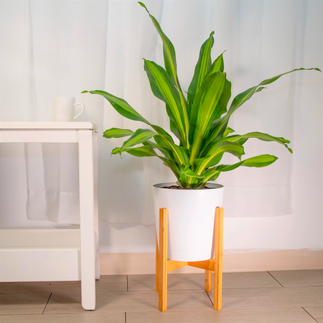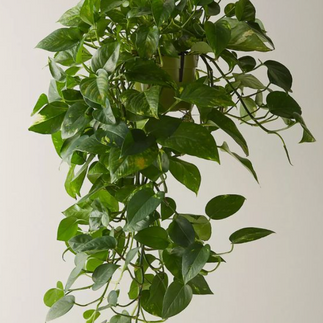How To Start Your Plant Journey
- Ana O'Neill
- Mar 20
- 6 min read

So you've made it this far on my website which means you're probably interested in how you can reap the benefits of owning a houseplant but you don't know where to start. Luckily, I've endured some trial and error and have discovered the foolproof way to grow plants in your own bedroom even if you're broke, lazy, and busy.
Step #1: Evaluate Your Resources
First things first, you have to determine what you're working with. Some helpful questions to ask yourself are:
How much space do I have?
How much sunlight do I have?
How much money am I willing to spend?
What supplies do I already have available to me?
Something I wish I knew before I started my plant journey is what the heck bright indirect light is, or any kind of lighting for that matter. It can be confusing trying to understand what type of light condition your plant needs so I've included this visual that has really saved me a lot of headaches.

Step #2: Choose Your Plant
Although it may be tempting to want to buy the biggest, most luscious and beautiful plant you can find at the store, you may want to ask yourself these questions first:
What's this plant's maintenance level? High or Low?
Does this plant need low light or lots of sunlight?
How often does this plant need to be watered?
Can this plant grow in just water?
This may seem obvious but make sure you choose a plant that is specifically meant to be grown indoors, some outdoor plants can look like indoor ones but they will die quickly if kept indoors.
I suggest adopting one of these six plants because they are nearly impossible to kill for beginners and they require relatively low effort on your end.
Expert Recommended Plants:
Ground Cherries
"Ground cherries are relatively simple to grow, though they do require some attention. The plants are actually members of the nightshade family, similar to tomatoes and peppers, and they thrive in warm climates. They prefer well-drained, fertile soil with full sun exposure. Ground cherries grow best in areas where they can get at least 6-8 hours of sunlight each day.

In terms of watering, these plants do best with consistent moisture, but they don't like to be waterlogged. I'd recommend watering deeply once a week, but avoid letting the soil stay too damp between waterings. Ground cherries don't need heavy feeding, but a balanced fertilizer applied in the early stages of growth can help. I've found that they really flourish when the soil has a good mix of organic matter.

As for harvesting, the best time is when the husks turn yellow or brown, and the fruit falls to the ground. Gently collect the fruit from the soil, making sure it's fully ripe. If you pick them early, they won't be as sweet.
Ground cherries are relatively easy to manage if you give them the right environment, but they do need space to spread out, as they can grow like small bushes. They're a great, low-maintenance addition to any garden, with a unique taste that adds variety."
Daniel Roberts, Chief Executive Officer, Lava Roofing
Native Plants
"When starting out with gardening, the first step I recommend is to evaluate your local climate and site conditions. Choose native outdoor plants, like Eastern Red Cedar or Butterfly Weed, which are more likely to thrive with minimal maintenance because they are adapted to your local environment; they offer natural beauty and support local ecosystems.

For those living in colder regions, consider robust options such as Hardy Ferns for shade or Black-eyed Susans for sunny spots. They add color and require low maintenance.

The consideration for choosing between indoor and outdoor plants should be about the space and time you can dedicate to plant care. For instance, if you're short on space or time, indoor plants like ZZ plants or Peace Lilies are excellent low-maintenance options that can add life to an indoor setting."
John Caplis, Business Owner, AJM Grounds
Minimal Effort Plants
"When deciding between houseplants and outdoor plants, consider your available space, light sources, and time commitment. For beginners, a houseplant like a pothos or a spider plant can be an excellent choice. They require minimal attention and thrive in varied light conditions, making them ideal for indoors. For outdoor gardening beginners, I often recommend starting with hardy perennials such as hostas or daylilies that can withstand your local climate and require less maintenance.

One of our approaches at Nix Landscaping is to use native plants, which are well-suited to local conditions and support biodiversity by attracting native pollinators. Take, for instance, our project changing an outdoor space with a blend of native perennials and eye-catching garden features, enhancing the area greatly while maintaining ecological balance. If you're starting with your garden, aim for a mix of low-maintenance plants that can thrive solely on the existing rainfall or minimal additional watering, like lavender or black-eyed Susans."
Kyle Nix, Deputy CEO, Nix Landscaping
Goal Producing Plants
"Really, whether you're getting an indoor or an outdoor plant will come down to what your goals are. If you want to grow lots of produce, then planting outdoors does make more sense. If you'd just like to grow a small plant, especially one that's native to tropical areas, then a houseplant is probably going to be better. I would recommend researching some native plants to your area if you're looking to start gardening, or pick something like a tomato plant or peppers, or a small herb garden, to start out with."
Ryan Farley, CEO, LawnStarter
Simple, High Yield Plants
"One practical tip from our research-backed approach is focusing on the right plant choice. For beginners looking for high yield and simplicity, opt for easy-to-grow plants like tomatoes, peppers, or herbs.

These plants offer rewarding results and are perfect for both patio spaces and small gardens."
Bill Vandeven, Owner, Garden Patch
Plants That Match Your Lifestyle
"If you're new to gardening, the best way to start is by choosing plants that match your lifestyle and environment. Deciding between a houseplant and an outdoor plant comes down to your space and how much time you can commit to care.
Houseplants bring greenery indoors, improve air quality, and create a calming atmosphere. However, they need consistent care, especially when it comes to lighting and watering. If you're often away or don't get much natural light, low-maintenance plants like pothos or snake plants are great choices.
Outdoor plants thrive in natural conditions but require attention to climate and soil. If you have a sunny patio or backyard, easy-to-grow options like marigolds, lavender, or even tomatoes can be rewarding. The best way to ease into gardening is to start small--one houseplant or a few potted flowers can help you build confidence before expanding your collection.

Most importantly, enjoy the process. Gardening is about patience, learning, and finding what works for your space"
Walter Perry, Greenhouse/Garden Center Manager, Perry's Florist
Step #3: Acclimate
After bringing home your plant, give it time to acclimate to its new environment. Take the time to observe how your plant is acclimating to your room. Some questions to ask yourself could be:
Do they respond well to their location or do they need to be moved?
Does your plant need to be repotted?
Are any leaves turning yellow?
Are any leaves sunburnt?
If your plant has some leaves with yellow splotches this means you are inconsistently watering your plant. This may happen after you bring your plant home for the first time as it needs time to adjust from the watering schedule it had at the store.

** Sunburnt leaves look like this and are caused by receiving too much direct light**

Reminder: Plants are pretty resilient like we are so they can bounce back!
Before:

After:

Step #4: Maintain
Now that you've made it this far, all there's left to do is maintenance. Monitor your plants weekly and act accordingly to the changes you observe.
"Through my years in pest control, I've seen how choosing the right plants can impact pest dynamics. Indoor plants like snake plants or pothos not only add greenery but also require minimal intervention, making them great for novice gardeners. For outdoors, marigolds are beginner-friendly and naturally deter pests, maintaining an eco-friendly garden.

One tip is to design your garden with pest prevention in mind. Just like maintaining pest-free homes, ensure proper spacing between plants for adequate airflow and reduce disease spread. This strategy not only keeps the plants vigorous but also simplifies pest control, minimizing the need for chemical interventions. Healthy plants are your first line of defense against pests and diseases."















Comments